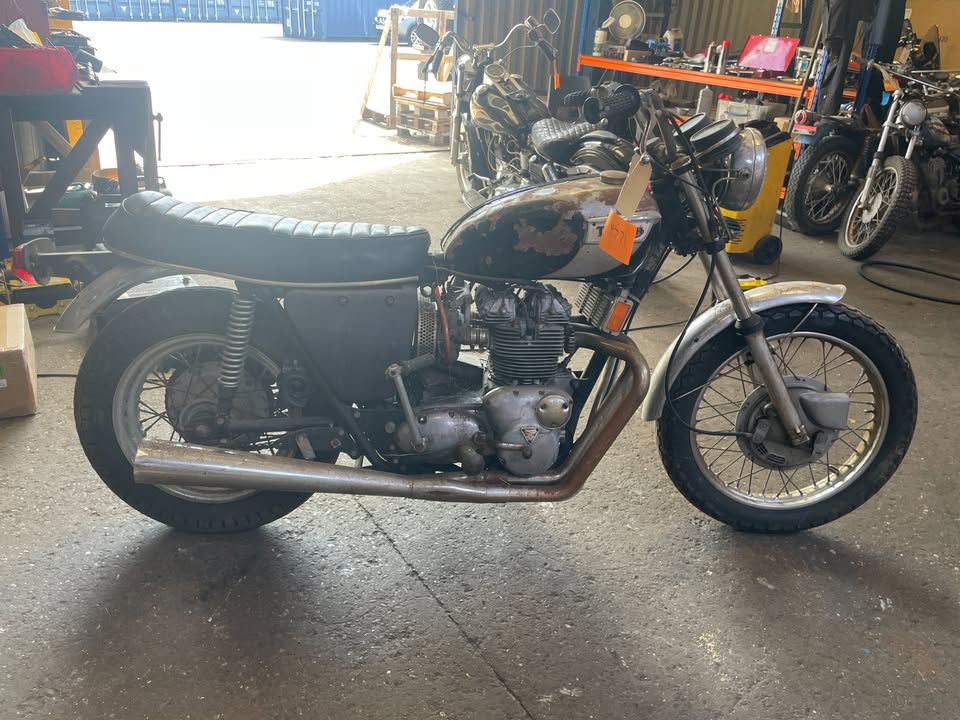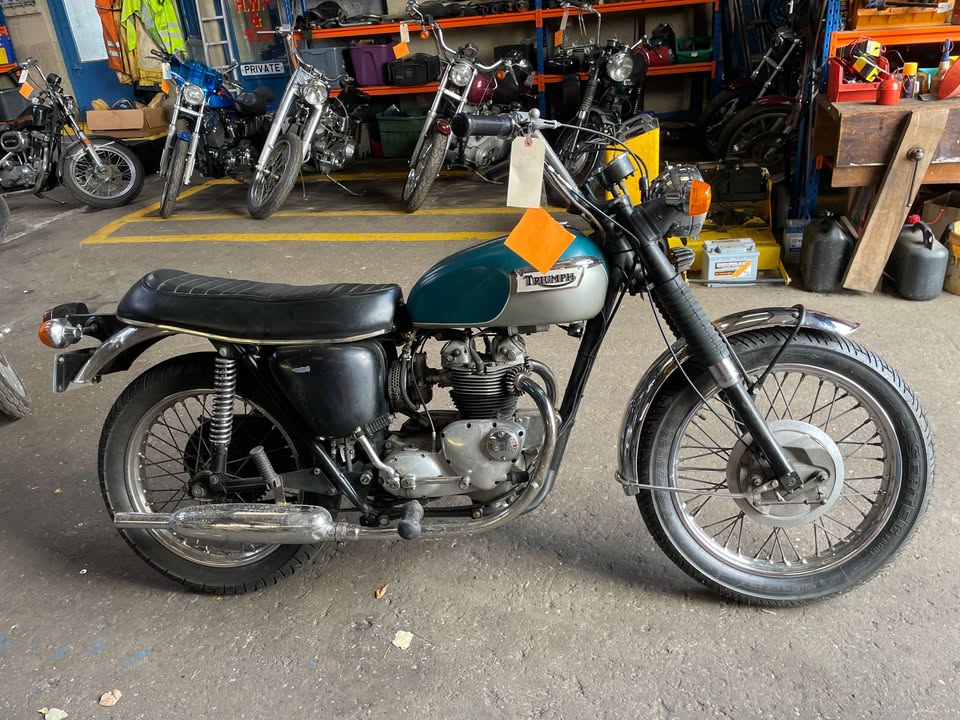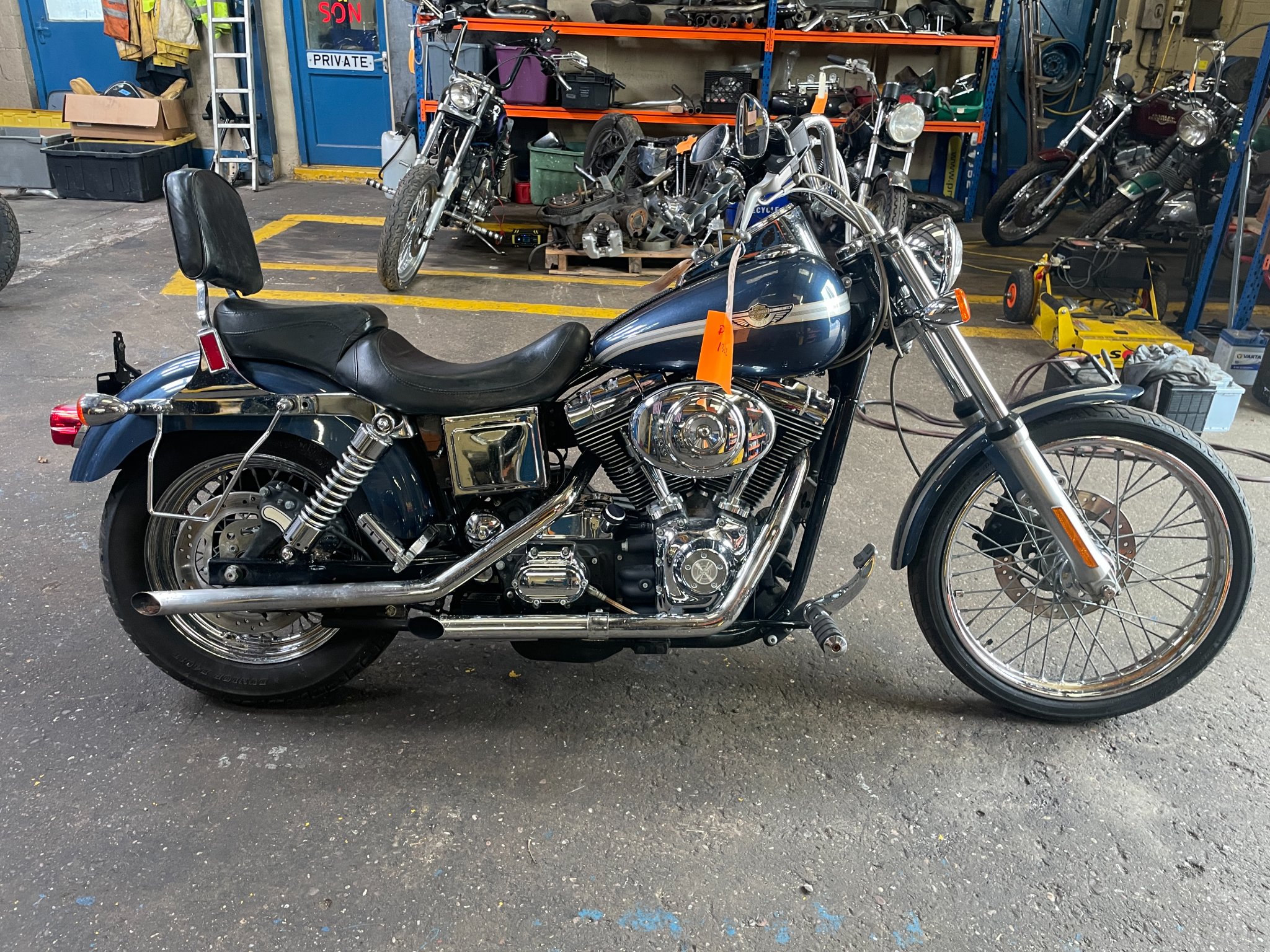Classic and Classy Motorcycles Ltd
Vintage and Classic Motorcycle Importers
1972 Triumph Trident T150T Tripple 750cc Barn Find Project Ref 1554

1972 Triumph Trident T150T Triple 750cc – British Triple Muscle with a Racing Pedigree
Historical Context
The 1972 Triumph Trident T150T was Triumph’s bold answer to the superbike revolution sparked by the Honda CB750. Originally introduced in 1968, the Trident was a radical departure for Triumph—a 3-cylinder 750cc machine designed to deliver more power and refinement than the aging parallel twin lineup. The T150T was a revised version introduced in 1971, featuring performance tweaks and handling improvements. While development was hampered by limited resources and internal struggles within BSA-Triumph, the Trident stood tall as one of the most ambitious British motorcycles of its era. With roots in endurance and production racing, the T150T helped establish the British triple as a serious high-performance machine.
Technical Specifications and Performance
• Year: 1972
• Make: Triumph
• Model: Trident T150T
• Engine Displacement: 741cc
• Engine Type: Air-cooled OHV inline triple
• Compression Ratio: 9.0:1
• Carburetion: Triple Amal concentric carburetors
• Ignition System: Points ignition
• Transmission Type: 5-speed manual
• Final Drive: Chain
• Cooling System: Air-cooled
• Fuel Capacity: Approx. 4 gallons
• Braking System: Twin leading-shoe drum front, drum rear
• Dry Weight: Approx. 460 lbs
• Top Speed: Around 120 mph
Technical Advancements
The Trident's three-cylinder layout was unique among British motorcycles of the time, offering a smoother and more powerful alternative to the classic twin. The T150T variant introduced a 5-speed gearbox—replacing the earlier 4-speed—which greatly improved highway performance and made better use of the engine’s wide torque band. Other updates included improved carburetion and a revised frame for better stability. Though still using drum brakes in 1972, they were among the best available for the period. The triple-carb setup gave strong mid-range punch, and the bike earned its stripes on the track as well as the street.
Evolution of the Model
The T150T evolved from the original T150 and would eventually lead to the T160, which featured an electric start and a more modern design. While the T160 may have been more refined, many enthusiasts consider the T150T the raw, performance-focused version that stayed truest to the original vision. Its styling remained classic British—slim tank, chrome details, and signature pea-shooter exhausts. Despite limited production numbers, the Trident became an icon among fans of British performance bikes and holds a revered place in Triumph’s legacy.
Competitors in the Market
By 1972, the Trident T150T was up against stiff competition from the Japanese big four—Honda’s CB750, Kawasaki’s H1 triple, and Yamaha’s XS650. These bikes featured electric start, disc brakes, and generally more user-friendly engineering. However, the Triumph Trident offered more soul, a unique engine character, and undeniable heritage. For riders who valued visceral riding experience over technical convenience, the Trident was the connoisseur's choice. It also had the advantage of real racing success in the hands of teams like Slippery Sam at the Isle of Man TT.
Legacy and Appeal
As a barn find project, the 1972 T150T is a rare and rewarding restoration candidate. Its triple-cylinder engine, while a bit more complex than a twin, offers fantastic sound and performance when properly sorted. Parts support remains decent, and there’s strong community interest in the model. Once restored, it delivers a riding experience that blends classic Triumph DNA with surprising performance. The T150T is a standout choice for collectors seeking something different from the usual Bonneville—an underappreciated British muscle bike with real pedigree and personality.
Find Classic Motorcycles
Stay in the loop - Subscribe for Updates
One email notification a month when a new shipment arrives.
 1971-Triumph-500cc-T100c-Tiger-Ref-1561
1971-Triumph-500cc-T100c-Tiger-Ref-1561 2003-Harley-Davidson-Anniversary-Dyna-Wide-Glide-FXDWG-1450cc-Ref-D1322
2003-Harley-Davidson-Anniversary-Dyna-Wide-Glide-FXDWG-1450cc-Ref-D1322